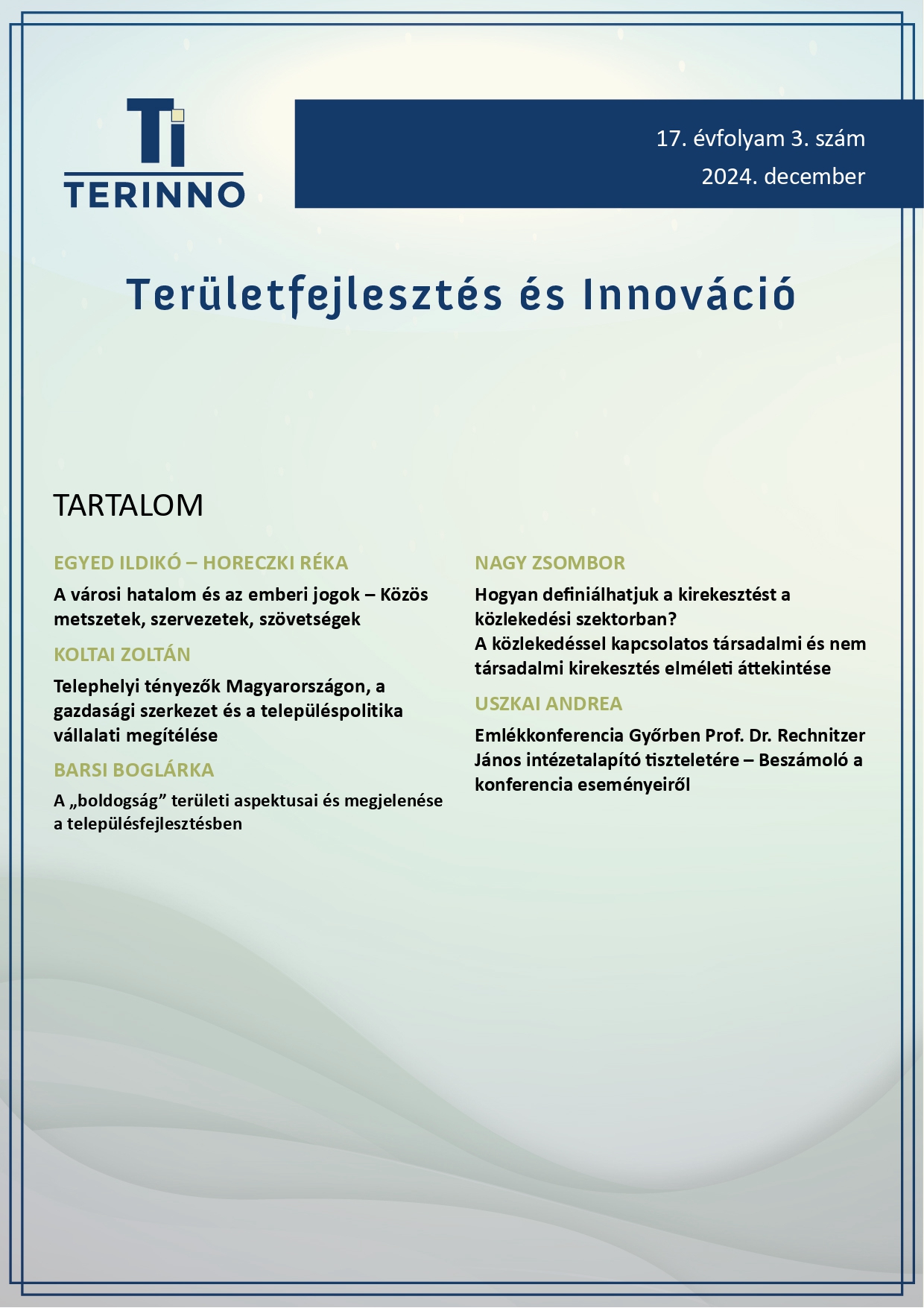Spatial aspects of happiness and its presentation in the development of settlements
DOI:
https://doi.org/10.15170/terinno.2024.17.03.03Keywords:
happiness, city, urban development, development of settlementsAbstract
The economic geography of happiness is a relatively new research area in spatial sciences. In my study, after interpreting the concept of happiness, I would like to present its emergence and integration into spatial research, as well as its impact and possible role in settlement development. In the course of previous research, no scientific consensus has emerged in the definition of the concepts of welfare, wellbeing, life-satisfaction, quality of life and happiness. The use of terms in the literature is very chaotic, many researchers simply use these concepts as synonyms. The study of happiness from a spatial perspective was a rarely researched area in spatial sciences until the 2010s, and the theoretical foundation of the geographical and territorial aspects of happiness was particularly lacking. Research that also includes geographical factors in the study of happiness can basically be grouped around 3 topics. One group includes research that examines whether there is a difference between the happiness of urban and rural areas. The second group includes research that examines the impact of the socio-economic characteristics of the “neighbors” on the happiness of those living in a given area. Finally, the third group includes studies that go back a long way and examine the impact of the structure and physical characteristics of the settlement (both built and natural) on the happiness of those living there. The concept of the “happy city” is a new approach to urban development that focuses on people and the quality of life of city dwellers, and prioritizes the happiness and well-being of residents.

